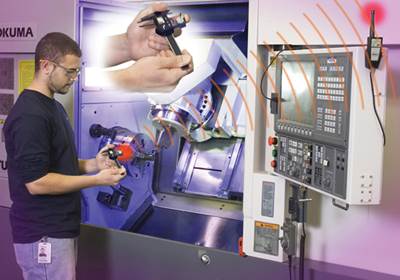
George Schuetz Director of Precision Gages
A Half-Century of Dimensional Gaging
Advances in measurement technologies have both resulted from and contributed to positive changes in a variety of industries.
Read MoreThe Case for the Perpendicular Indicator
In most cases, a standard or dial indicator is adequate for gaging requirements. However, sometimes the normal orientation of a standard indicator does not work for a particular application. In this situation, a perpendicular indicator might be the better choice.
Read MoreSometimes You Just Can’t Get There from Here
Digital indicators have increased in capability while remaining relatively low in cost. Upgrades include better and larger displays, dynamic features, and increased calculation capabilities, battery life, resolution, and accuracy. They have advanced to the point in which they can almost be characterized as portable bench-gaging amplifiers, but these advances can get you only so far.
Read MoreThere Is a Sieve in Your Roughness Gage
For analysis purposes, filters are used to separate wavelengths into roughness and waviness. The cutoff value functions like a sieve to separate these wavelengths.
Read MoreGaging Computers: Doing More with Less
Giving operators a single user interface that implements all aspects of gaging helps them become more productive and reduces the potential for error.
Read MoreSurface Gaging for Golf: New Faces in Unusual Places
To ensure a manufactured product functions properly, engineered surfaces are often specified as part of the manufacturing process.
Read MoreImplementing Single Minute Exchange Fixtures
The Single Minute Exchange of Dies (SMED) concept, which improves manufacturing efficiency by reducing or eliminating bottlenecks caused by process change-overs, can be applied to Single Minute Exchange of Fixtures (SMEF) to improve change-over times on various forms of gaging equipment.
Read MoreSMEF—Gaging’s Version of SMED
Single Minute Exchange of Die (SMED) is a lean manufacturing concept that originated in the late ’50s and early ’60s to improve manufacturing efficiency by reducing or eliminating bottlenecks caused by process change-overs.
Read More“Stylin’” with Your Caliper
The basic caliper is often used for length/diameter measurements, but other caliper styles extend the tool’s advantages to special measurement applications.
Read MoreGetting the Fixturing Just Right
A gage requires just enough fixturing to do its job accurately and cost-effectively. Since the fixture establishes the relationship between the workpiece and the measuring system, its design and manufacture is as important to accurate gaging as the measuring instrument itself. However, in addition to accuracy issues, the fixture design can make a difference in a gage’s efficiency and economy of use.
Read MoreMeasuring Surface Finish on Valve Seats
Measuring surface roughness of valve seats on cylinder heads is challenging. The land areas are short, and the roughness values are high. Normally, valve seats require basic roughness parameter analysis by a skidded measuring system. However, because of the short length and high roughness values, some argue that a skidless system is the best way to measure roughness of these surfaces.
Read MoreThe Digital Caliper as a Swiss Army Knife
Sometimes a tool that provides suitable performance in a variety of applications is a better choice than a tool that performs extremely well at one dedicated job.
Read More






